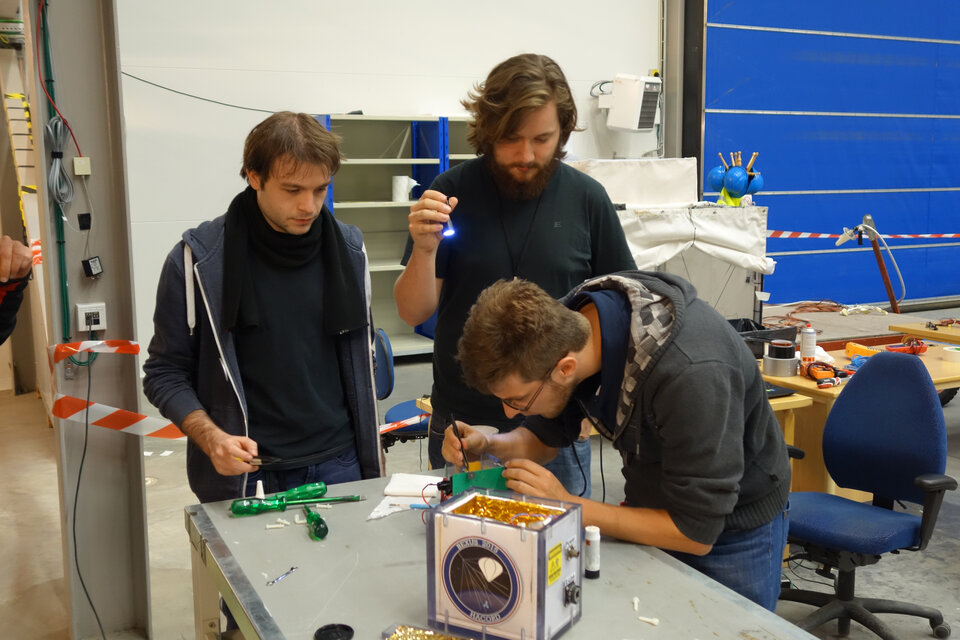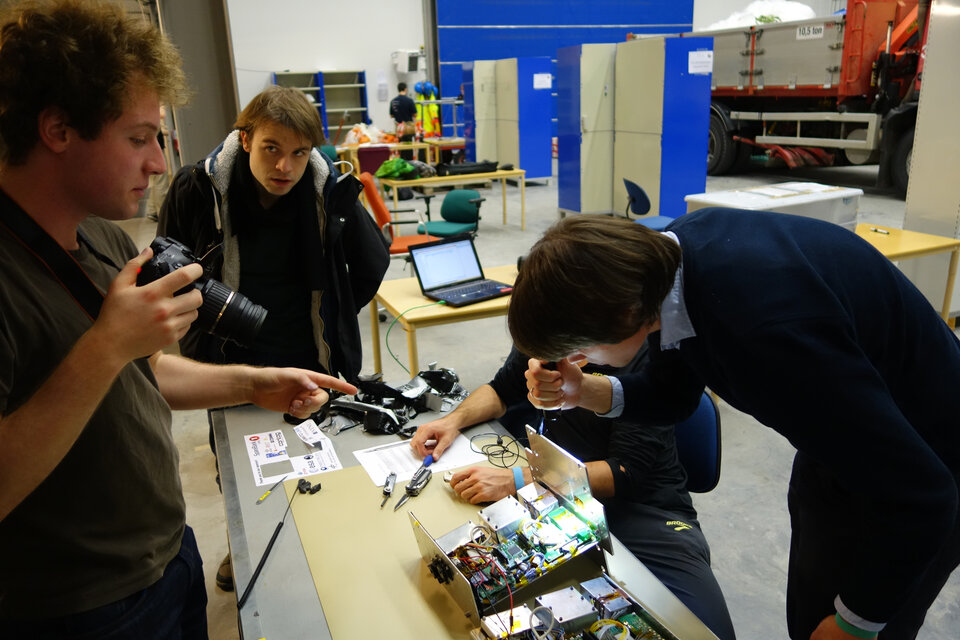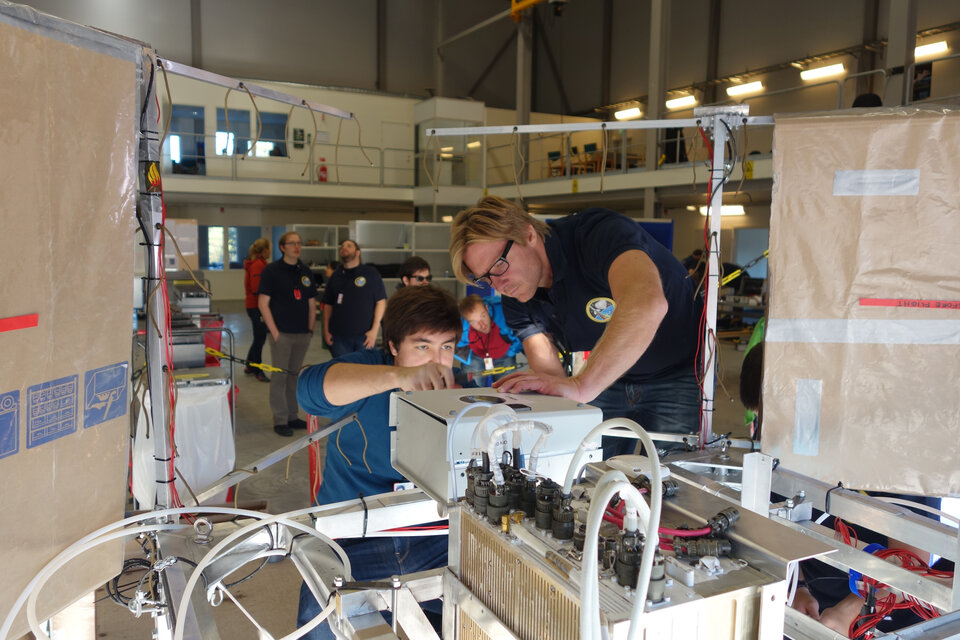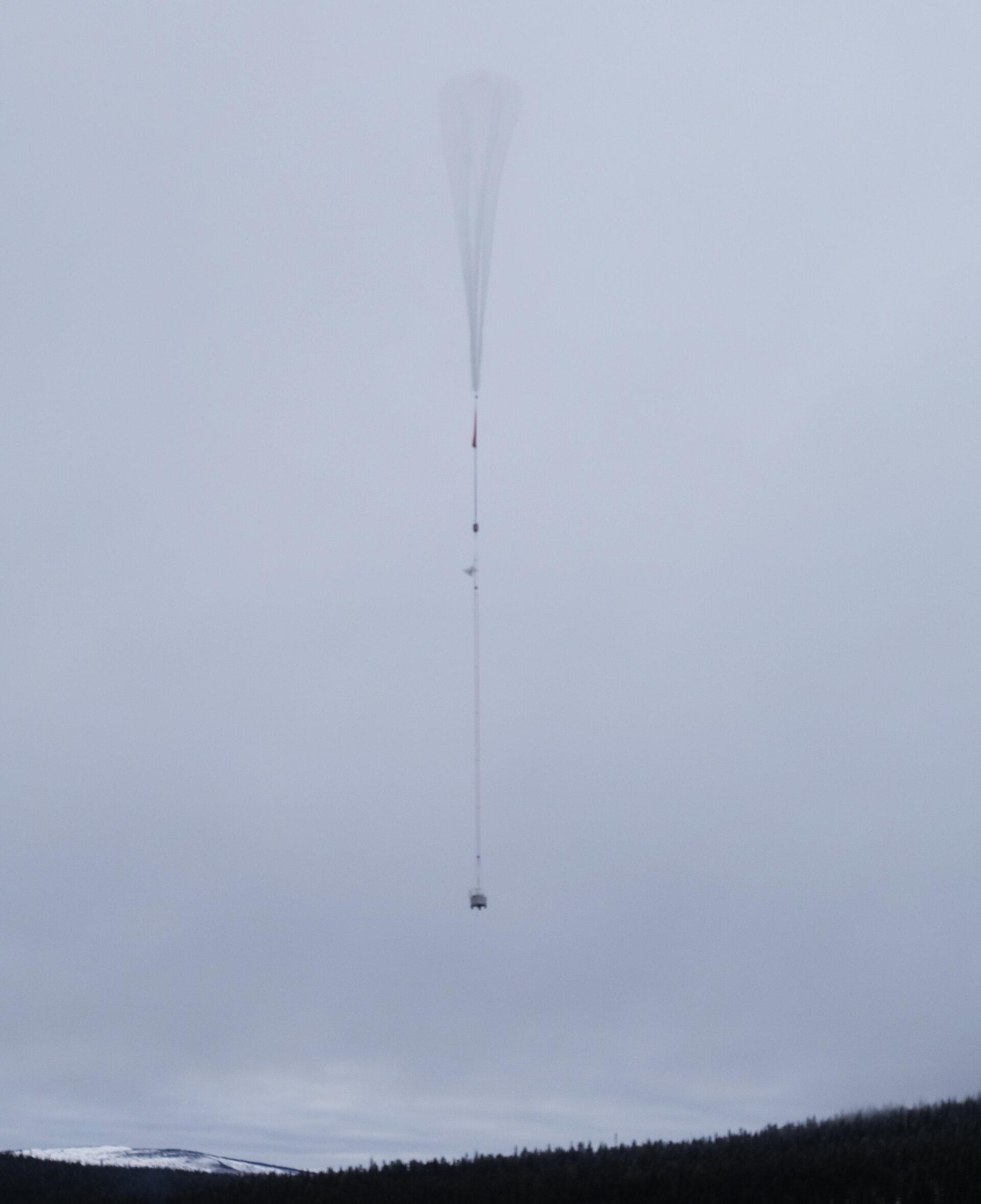BEXUS 20/21 student stratospheric balloon experiment campaign concludes successfully
Almost forty students have just spent ten unforgettable days in Sweden working towards the launch of their experiment into the stratosphere as part of the German-Swedish Rocket/Balloon Experiments for University Students (REXUS/BEXUS) programme.
Six university student teams participate in the campaign which took place at the Esrange Space Centre outside Kiruna, Sweden, from 2 to 12 October.
Four teams were sponsored by the Swedish National Space Board (SNSB) and ESA. These teams came from universities in Norway/Germany, Belgium, Poland, and Spain. Two further German experiments were sponsored by the German Space Agency (DLR).
Upon arrival at the Esrange Space Centre the teams checked to make sure their experiments were undamaged by the transit. Once that was done, they loaded their experiments into the balloon gondolas and tested that the experiments worked individually, together, and without interfering with the balloon’s systems.
Once this flight compatibility test was completed without problems, the countdown began. The experiments were split between two high-altitude balloon vehicles: BEXUS 20 and 21.

BEXUS 21 was scheduled to fly first. It took to the skies at 11:30, after a five-and-a-half hour countdown, which began at 6 am on 7 October. It reached 27 km in altitude at 13:00 and after one hour into the ‘float’, ground controllers saw that the balloon was beginning to descend.
Monitoring the situation carefully for the next thirty minutes, it became obvious that the problem was not going to resolve itself on its own. The descent was most probably due to a small hole in the balloon. Unwilling to risk a complete collapse of the balloon, controllers ordered the payload to be cut. It parachuted back to Earth and was recovered.
The total float time of 90 minutes was enough for the student experiments to obtain the necessary data.
The SNSB/ESA experiments were:

FREDE 2015 (FREon Decay Experiment) from Wroclaw University of Technology & University of Wroclaw, Poland. The main goal of this experiment was to study the disintegration of chlorofluorocarbons (CFCs) under bombardment by the UV radiation naturally present in Earth’s atmosphere. The team analysed probes during flight and recovered enough CFC gas for detailed analysis in the laboratory. “Our results are better than we ever expected them to be.” the team said.
SPADE (Smartphone Platform for Acquisition of Data Experiment) from Universidad de Sevilla, Spain. This experiment tested a low-cost real time data acquisition platform for stratospheric exploration missions based on two off-the-shelf smartphones and an auxiliary sensor network. Although there were some connection problems before launch, the team solved these issues in time for the flight and the experiment performed to the team’s expectations. “For the SPADE team, not only is the REXUS/BEXUS programme a great opportunity to fly an experiment on a stratospheric balloon, it is also a unique experience to learn and develop a project with the help of space expert engineers and professionals.” the team commented.
In addition, the DLR sponsored-experiment InTex (INflatable TEXtile based antenna systems and structures) from Technical University of Dresden, Germany, fulfilled its objectives.
On 10 October, BEXUS 20 was ready to go. Countdown began at 10:00, and liftoff took place at 11:15. The float altitude of 28.2 km was reached at 13:00, and the experiments worked until 15:10. Following the cut-off, the gondola touched down at 15:40.

The SNSB/ESA experiments onboard were:
HACORD (High Altitude Cosmic Ray Detector) from University of Antwerp, Belgium. The HACORD measured the flux and angular distribution of cosmic rays at different altitudes. Four Geiger-Müller tubes set up in a specific formation were used for this purpose. The experiment worked flawlessly, providing the team with all the data they expected. “We can compare our results with those from former experiments performed in different years and at other latitudes.” they said.
CPT-SCOPE (Cosmic Particle Telescope) from Norwegian University of Science and Technology, Norway; Freie Universität Berlin, Technische Universität Berlin, Beuth Hochschule für Technik Berlin, Germany. CPT-SCOPE used novel radiation-hard integrated circuit technology and standard semiconductor detectors to study energetic sub-atomic particles such as electrons and protons in the stratosphere. Again, everything worked as the team had expected. “The flight was a great success. We are now looking into the data analysis and preparing to present our results at conferences.” said the team.
COSPA (Collection Of Stratospheric aerosol PArticles for a better understanding of the development of Polar Stratospheric Clouds) from TU Darmstadt, Germany, another DLR sponsored experiment also worked well.
The teams have now returned to their universities to analyse their data and samples and write their final reports.

A new cycle of the REXUS/BEXUS programme will take place next year.
For more information see REXUS/BEXUS website and ESA website.
Notes for editors:
The REXUS/BEXUS programme is realised under a bilateral Agency Agreement between the German Aerospace Center (DLR) and the Swedish National Space Board (SNSB). Through the collaboration with the European Space Agency (ESA), the Swedish share has been made available to students from all ESA Member and Cooperating States. EuroLaunch, the cooperation between the Esrange Space Center of SSC and the Mobile Rocket Base (MORABA) of DLR, is responsible for the campaign management and operations of the launch vehicles. Experts from DLR, SSC, ZARM, and ESA provide technical and logistic support to the student teams throughout the project.




